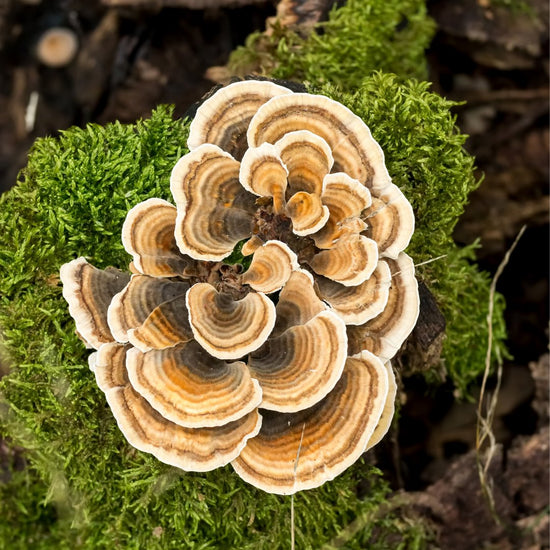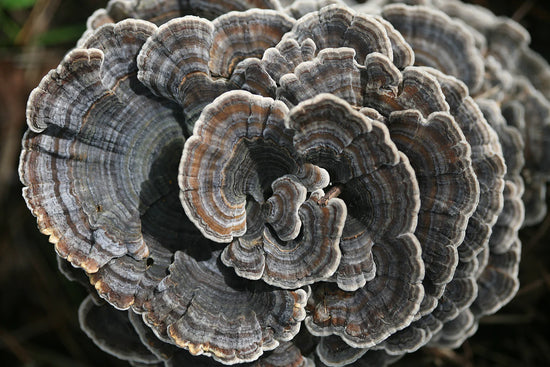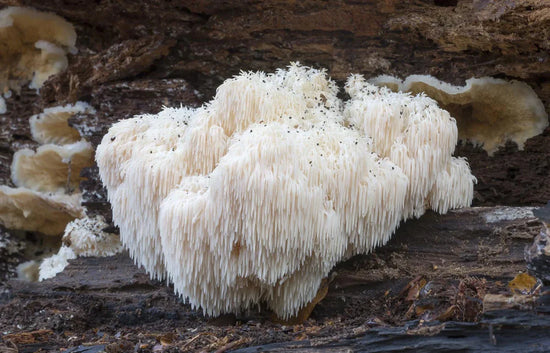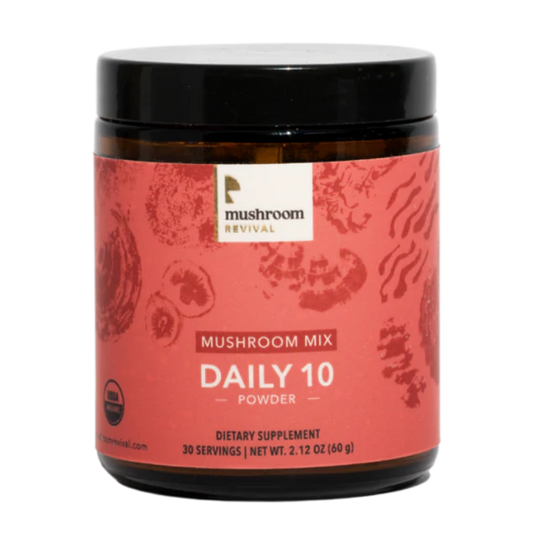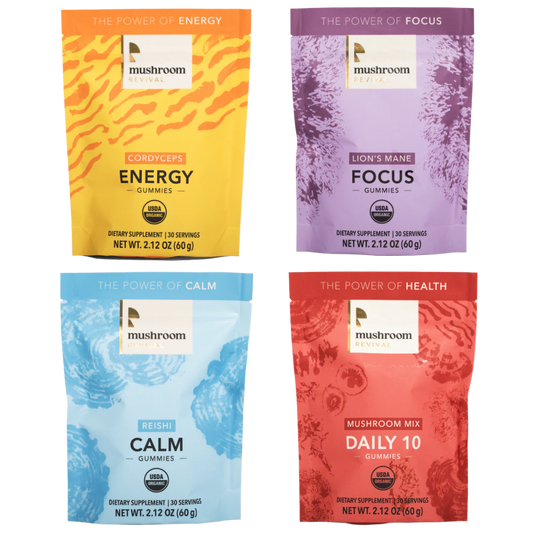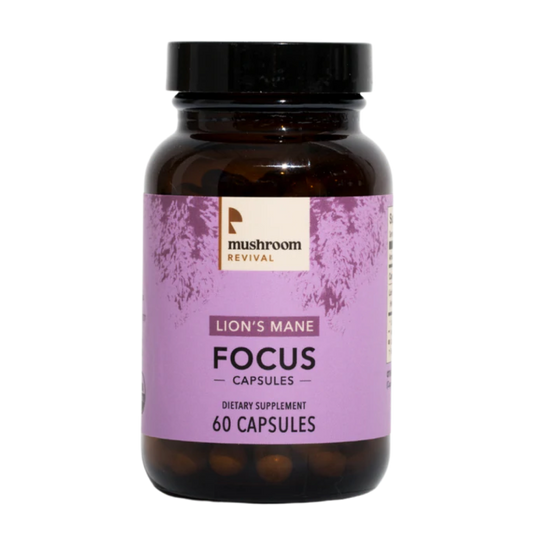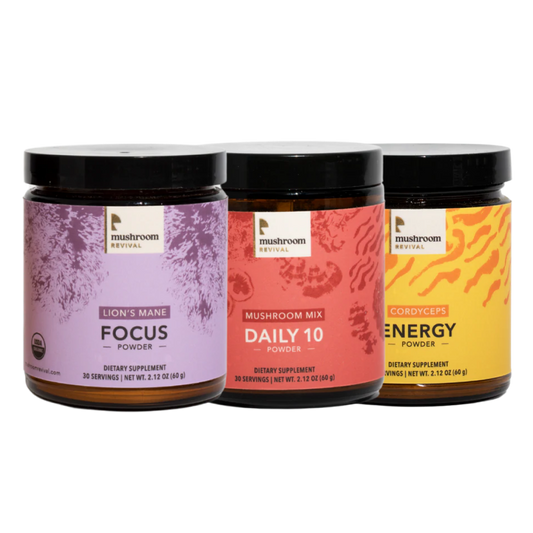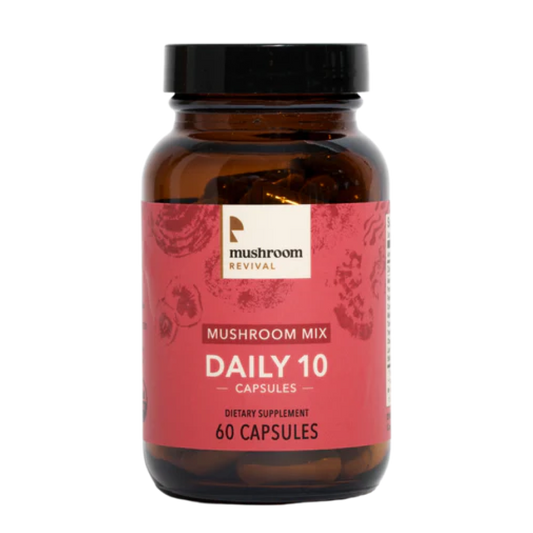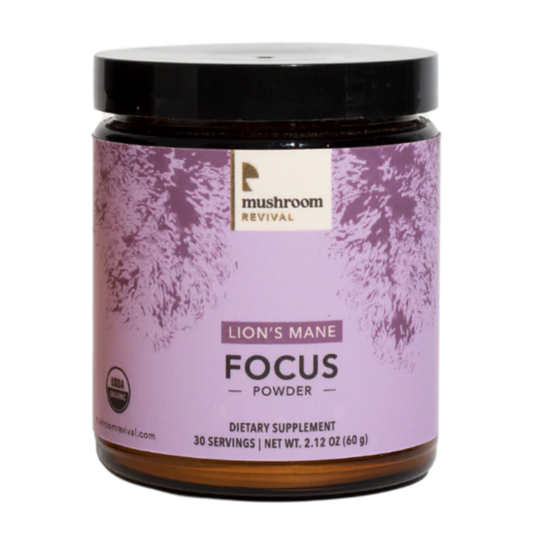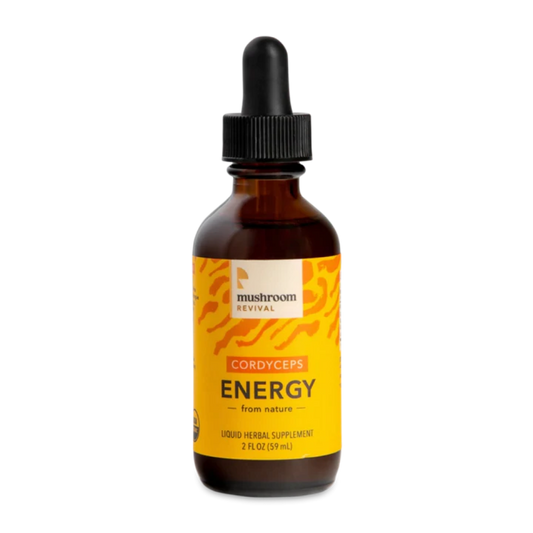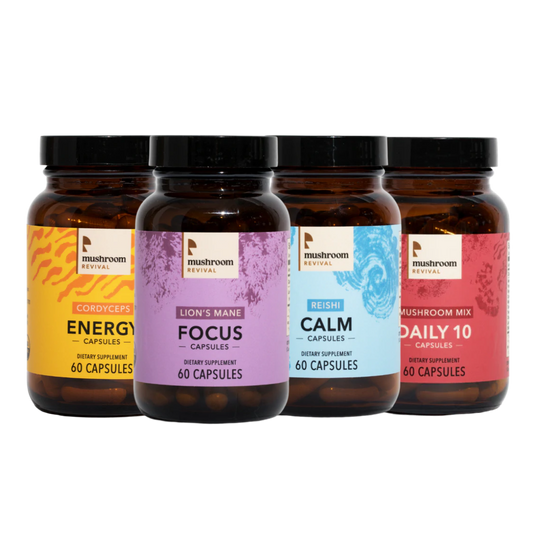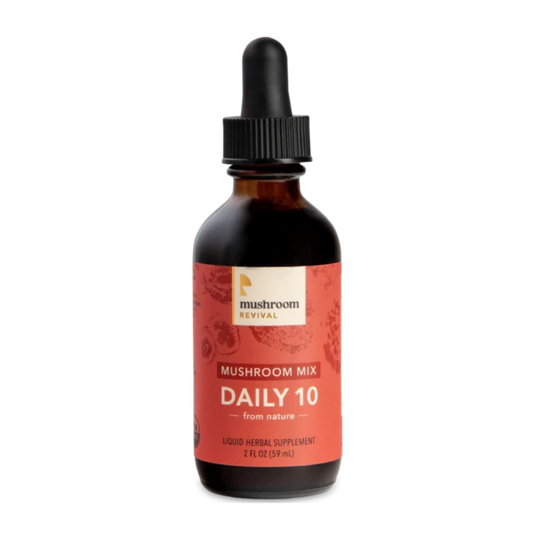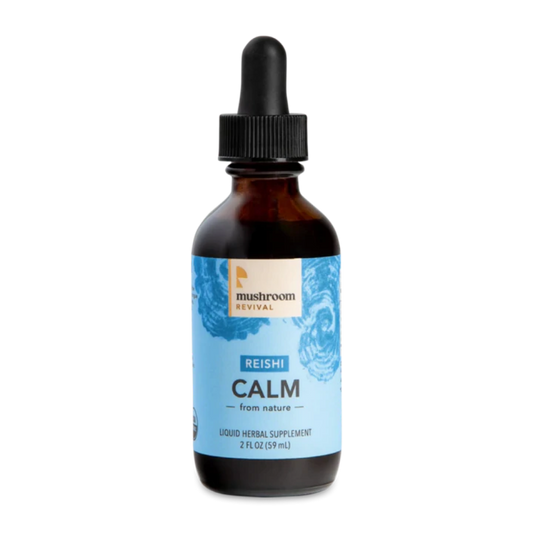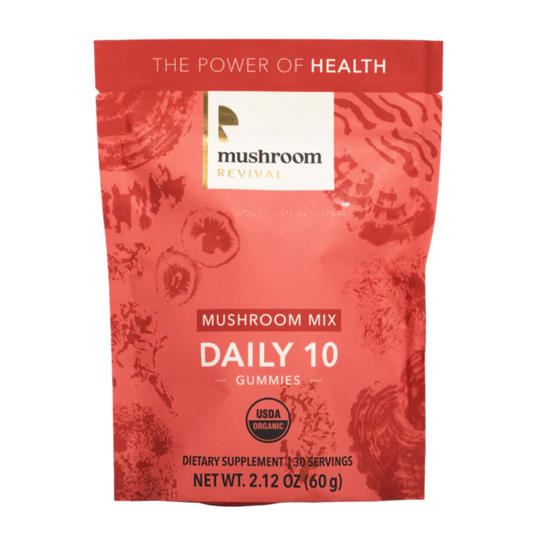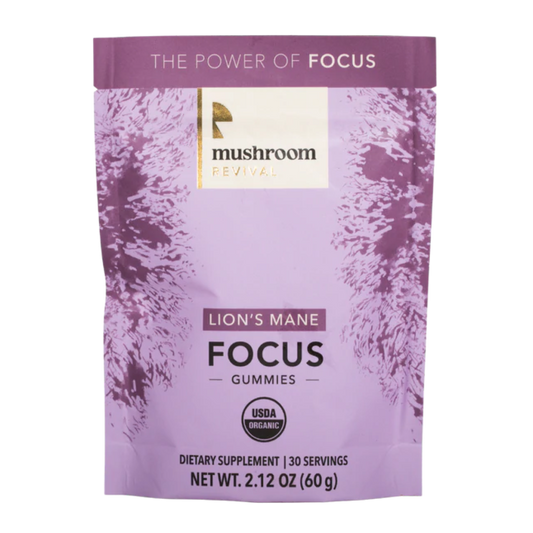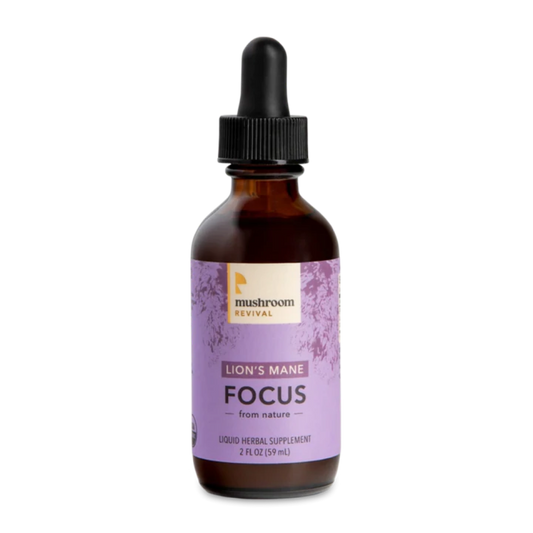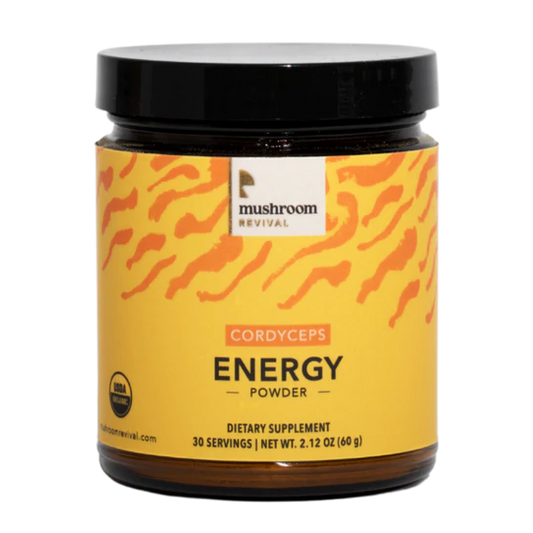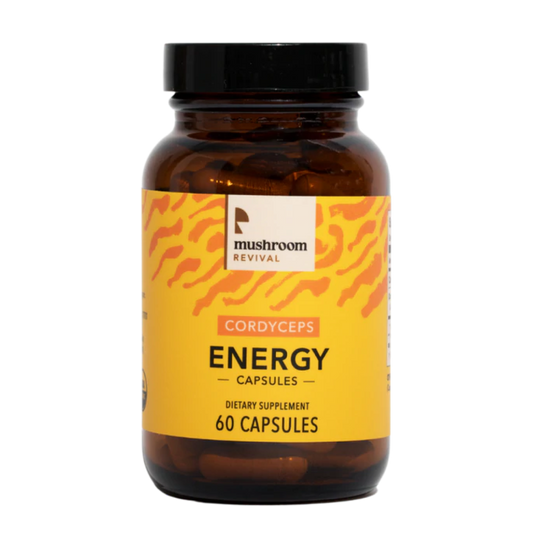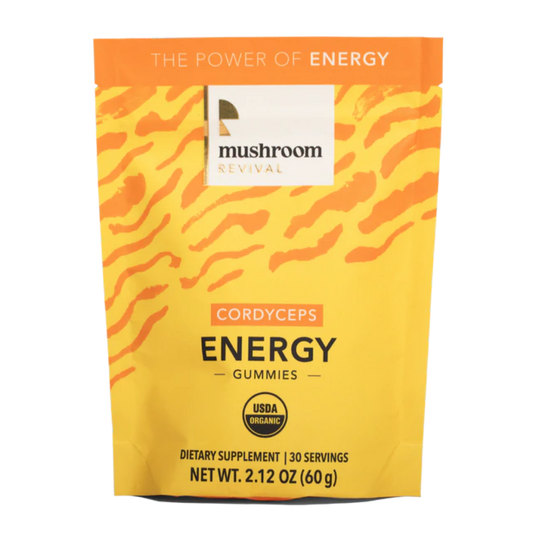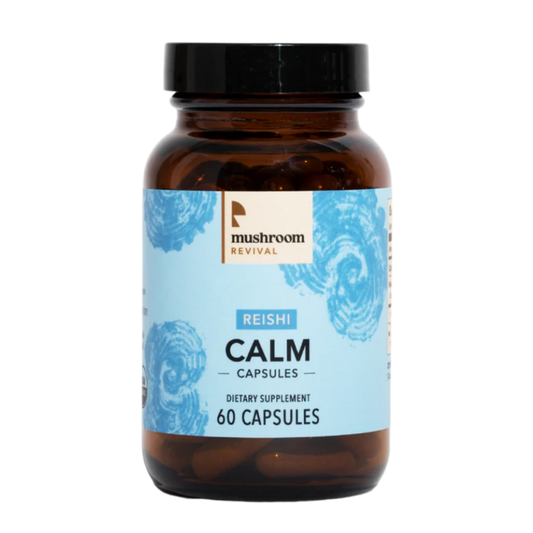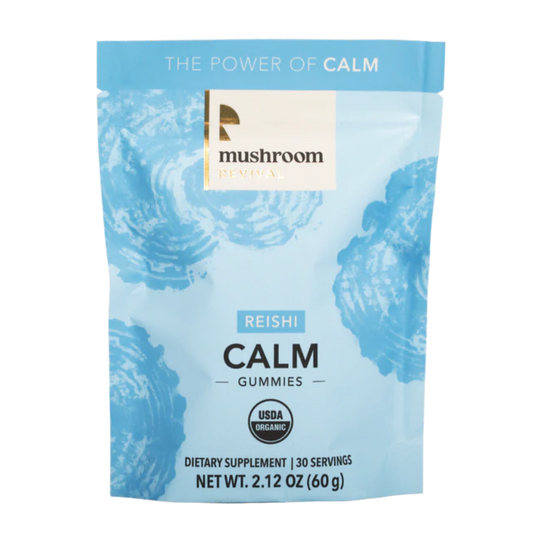TRANSCRIPT
Transcribed by https://otter.ai ** Subject to error
Alex 0:00 You're listening to the mushroom revival podcast. Welcome back mushroom family. We are about to shroom in for another episode of the mushroom revival podcast another week of geeking out and nerding about mushrooms and fungus fungi Fuji. Today we're covering the mycology yet again of wood spalting with the expert Dr. Sarah Robinson, Lera 0:26 You got that right Spalting 2.0 we had a short episode on this a month or so ago but y'all I left so much juicy information out. It was only just to let the expert themself share what they know on this niche, but surprisingly auspicious science. Alex 0:43 This episode will give you a unique fungal perspective that you can't get anywhere else. And we think you're gonna love it. Lera 0:51 I certainly loved it so much that I signed up for Siri and their team's Patreon which has the coolest perk ever. Once a month you get a free fungus, a free spalting culture guess what just came in the mail two days ago and elfs Cup blue stain fungus the best Patreon perk ever, like how much you pay for a culture anyway. And you get really pretty cultures that make beautiful pigments. So maybe add your name to the list. Alex 1:17 But before we dive in the review of the week, this whole episode is basically lire and Dr. Sarah Robinson so let's hear from our wonderful listeners. This week's featured review is from L Ron hob donger The title is love this podcast just started to cultivate my own mushrooms King oyster and lion's mane and this is a great pod to have on while I watched the mycelium grow. They have such insightful people on but sometimes I just want to hear that what the hosts have to say. Would love to hear some podcast with just the main peeps keep on the awesome podcast much love from Dallas. Thanks we honestly to answer your your question or your request we our first episode ever we did myco one on one, one of our most listened to podcasts. And listening back from years ago. It's a little cringy. So we're looking to re record that episode. And that will just be me and Lera geeking out about mushrooms one on one. Also, we have 11 new products coming out in little under two months, month and a half. And we have a bunch of exciting projects launching and we will do a whole housekeeping episode. In a month or two just check in on our life, what exciting things are going on. So that'd be another episode, just as to but in the meantime, you know if you want to support the show, if you want to support both of us and the whole team here at mushroom revival, you can go to our website at mushroom revival.com use the coupon code pod tree for special but unique and surprise discount code and ever changing discount code ever changing in there and change? Well. We won't tell you what it is you have to plug it in to find out what your discount is going to be like an Easter egg to get all your mushroom goodies to support your energy focus, immune support, support against occasional stress and fatigue. You name it. Mushrooms are there for you. Lera 3:23 And now it is time to get weird with spalting fungi with Dr. seri Robinson. Sarah Robinson, thank you so much for joining me today on the mushroom revival podcast. Seri 3:52 I'm so excited to be here. Lera 3:53 I can't believe I hadn't found out about you earlier. So Seri 3:59 I lurk in the shadows. That's that's the problem like a fungus. Yep. Yeah, I Lera 4:03 feel like that's the nature of spalting too, you know? So I watched your documentary documentary and I heard a bit about your story but I would love for our listeners to know your origin story and like how the hell you ended up dedicating your life to this super niche myco logical wood phenomenon and how freaking cool it is and how much we owe you for this knowledge. Okay, sure. Seri 4:26 So I have been a woodworker since oh my goodness, I don't know I was 10 or so. I grew up with working with my grandfather and doing a lot of window repair and that kind of stuff and I didn't really like working with metals and glass that cut up my skin too much. So in junior high when woodworking was offered I really fell in love with working with my hands was something that was a little bit less harsh on the skin. And so I was really into furniture making I took all the woodshop classes in high school there were quite a few at my high school and my senior year. My teacher, Mr. Bloom tried to get me into turning and I was like, ah live, I'm just like, really, I'd rather make furniture. So he suckered me into it. He brought in a piece of Ambrosia maple, which is partial spalting, partial insect partial tree. There's a whole bunch of things going on with that, oh, but it was blue and green and have holes in it. And then he brought in a piece of boxelder, which is not Spalding. But it is a bright pink, sort of color in wood. And I was I just remember feeling like kind of betrayed, like, no one had told me that there was colored with like colored wood was an option like that it just been left out of the discourse. And I was like, I don't, if you had given me this, at the start, I would have been on the lay, like, I'm never leaving the lay by this is all I want. Like, I just want to work with pink wood forever, basically, you know, being like a 13 year old that was that was that was suddenly my life. And so I learned to turn because spalting here in the us right now the interest is primarily with woodturners. Because it's it's it can be decayed. And so it's not the best for anything structural like, you wouldn't want to be making a bed frame necessarily out of it. You know, it's got some issues, but for decorative bowls and things, it's great. And so if you want to work with it, you kind of have to be interning and then I fell in love with turning but um, I sort of vowed that day to never work with just plain wood again. I just had no interest in it. So I went to college, and I majored in woodworking, which was in the art and design major. And they I went to Northern Michigan University because they had a whole room just filled with lathes. And so I just turned all the time, I had a really good time, but I felt like I didn't really learn what I wanted to necessarily I, it was very it was very art focused, which is, which is great. I learned a lot about form and function. But I didn't get a lot about wood itself. And I was very interested in it. And so I switched over to wood science for my masters, and then PhD and postdoc and eventual job. But my when I was trying to pick a thesis topic for my master's, my, my advisor actually know what what are you into. And I was thinking about, you know, building in furniture and turning and stuff. And he saw some of my turn to pieces. And he said, Well, what's going on here? And I was like, Oh, that's spalting. And he was like what Spalding and I was like items when done would have color? I don't know, that's just what they call it. And here's what we know about it. And so I started, you know, digging and then I was like I don't actually think we know. And so if you can put into the framework, right now you can go on Wikipedia, and there's spalting entry. And you can you can Google it, and you get basically the same answer over and over and over again. But back when I started doing this, there was no, you would get pictures of zone lines, so black lines, but they're all the easy it bacteria is a boxelder is spelled like there was just a small thing is when what is kind of colored, we're not quite sure what's going on. It's probably fungus, but probably also bacteria and maybe insects. And maybe it's the tree. And no one like it was just very nebulous. And so my that became my master's project, which was just defining spalting really digging into the literature trying to come up with a way to bring it all together and starting to look at some of the fungi and then it just sort of snowballed from there. My work got published, which we were really, I mean, master's thesis on spalting. I really didn't have high expectations for it, but people were interested. So I did a PhD. And then before I had finished my PhD, I got offered a postdoc doing the same thing. And then before my postdoc was done, I got offered a professorship to do basically the same thing. And then I wasn't even in that job for a year before I got offered another one to do the same thing. So it was it's a very niche area. But it reaches a lot of other branches of science because of the applications that are outside of woodturning and art. And so I think because of that, and it's it's interesting, and it it does art, and it does science, and it does a whole bunch of things that I think it's very engaging for students in particular. So academia seems to be pretty on board with it. And I obsessed with it. So of course I just keep working with it. Lera 9:28 Yeah, and I feel like as a scientific or science driven person working with wood, what a more perfect thing to focus on than then spalting This is so cool to me because I feel like you became an inadvertent mycologist through your pursuit of understanding this. It's so true. Seri 9:49 I haven't taken so you gotta remember that I went into grad school with an art degree. So I didn't have any math classes other than I took a statistics class. I hadn't had chemistry. I hadn't had physics even in high school. I hadn't taken physics. And so I hadn't certainly hadn't had any mycology classes. And actually, I still haven't had a single mycology class to this day like a formal. I've read books, of course, but I haven't had a single formal mycology class. It was a lot of Alright, well, what is a fungus? I don't know. Let's read a book. Oh, no one actually that the I guess the nice thing about not having the background is not knowing what you should know and what you shouldn't. So when a spotting fungus comes up, and no one knows anything about it, that's not it's not a downside because you don't know anything. And so you know, we come up with Alright, close to borea. What do we know about it? It probably likes it a little cooler. Maybe it's green. You know that. I mean, when I'm working with these rare fungi, not knowing things doesn't bother me. But I think the same way it bothers other people, Lera 10:51 right? And it is truly a niche within a niche because mycology as a field is what I hear defined as a neglected mega science. And a totally is a newer just like in your own crevice of delight. And the more I studied it, the more I read your book, I thought this would be so compelling to our listeners, because you had a beautiful sentence in here about how you're you're not encouraging the mycelium, but you are encouraging pigment, and how the approach to do this from standard mushroom growing or fungus growing is opposite. So I thought what a great lens for any fungal enthusiast just to like see what the fungi don't like, but to get all the metabolites out, but not the mycelium, not the hyphae just all their enzymes in their juices. And I sooo so want to get into the deep mycology. But perhaps before that we should kind of paved the way for sporting in general. How do you define sporting? Seri 11:54 Sure, the sort of professional definition of spalting is any color in woods or not on wood, but in wood that is caused by a fungus. So it can't be a color by the tree. It can't be a color by bacteria. And it has to be deeper than, say, half an inch or so in because there are lots of mold fungi out there that can secrete pigments, but they don't penetrate. And there's a the types of pigments that spalting fungi have are sort of a unique class. And they're they're a lot more stable in UV, they don't move as well with water and that sort of thing. So they're very different than, you know, say, green produced by a Penicillium. So there's a it's a very sort of niche grouping of fungi that have to have the ability to decay wood in order to then at least partially get inside the woods so that their pigments can be secreted. Lera 12:48 Beautiful. And I'm sure people can think of the zone lines that to me before I started looking into this was spalted wood. And then I was like, oh, that blue stuff I find from Korea. Korea is also technically spalting. And so is like white rot. So it's cool to know that, that that very general definition of spalting. And could you talk a little bit about the myths and legends around spalted wood in the US? I know you mentioned some of that in your book. And since there's not really mean many people out there looking into this. I think it'd be worth debunking. Seri 13:26 Sure. So are you are you in the spalting one on one book or the spalted wood book Lera 13:30 spalting one on one. Okay, so Seri 13:31 you have sort of a condensed version there which is good it's a little bit easier read so there's there's two books out on Spalding for people who care spalted wood is sort of like this big like coffee table type book that has a huge like European history on spalted wood and then sparkling water once the the do it yourselfers guide. But they both have little sections in there about urban legends and history spotting one on one a little bit more, because I had done more traveling at that point. So I had been able to collect some basically fairy stories about spalted wood from Chile. In in the US, we don't have cool fairy stories, unfortunately, in the United States a little too new of a country for that, at least from our like Western perspective. But there we still have myth around spalted wood and that myth is about how to make wood spalt in the wild. And so everyone kind of has their own super secret recipe for making spalted wood and they are amazing. You can't find them as often on the internet now because I've been giving these talks for I don't even know 20 years. And so a lot of that has fallen by the wayside. But within the in the first sort of 10 years of giving these talks, you could still go online and find recipes like really like some like really basic recipes like cover it in dirt and leaves and wait a few years. Which is is fine because all wood decay Therefore all wood can spoilt. So yes, if you leave out log on the ground decay will occur. But some of them get really elaborate, like, is Yana put like fertilizer on it and mayonnaise. I saw one that was ground reindeer antlers. I have a lot of questions about that one. There's so many that involve beer just like an incredible number that involve beer and either like pouring the beer on the wood, or you drinking the beer and then urinating on the wood. Now, which is it makes sense, right? nitrogen is a limited resource, your urine has nitrogen. If you drink the beer, I guess there's extra sugars out there. You can see the logic jumps, like they're not that far. And so that's it's really interesting. And there's definitely a cottage industry based around, you know, buying, buying some sort of like, you know, how do you how do you make your smelting mix? Well, it's one part mayonnaise to two parts Miracle Gro and Pabst Blue Ribbon. Oh, okay, I'm gonna try that. So we have a lot of that. And I think it's, I think it's really cool because it is a part of our history. None of it works, mind you. But that doesn't matter because people are so spalting is so mysterious to people. And they, they like it so much that they're willing to engage in alchemy, basically, to try and get a natural decay process to happen. Lera 16:43 That's, that's so interesting. I feel like it says something about the culture to have just beer and Manet's, like, who cared about spalting wood for the last couple of decades and same culture there was drinking beer and eating man is and you can't get right. You really, really can't. But okay, so when you were researching this, did you try these experiments and just not ever see them work and then put your foot down and thought I'm going to, I'm going to get behind the science of this. Seri 17:12 Wow, I did not. And that was because I went looked at the recipes. And I looked at their timelines, and all of them had at least a year out. And even in my master's, I was doing spalting in eight to 10 weeks. So it never it. I mean, I wasn't let's To be clear, I was never going to pee on wood to begin with. I have, like I have lines. And that was like that was a real hard line for me. I probably could have been convinced to pour beer on it by just I sort of felt like well, if these if this is what the Internet has to offer, if this is what are your sort of cultural history has to offer, but I'm already doing it faster, I'll probably just carry on with with what's working. Lera 17:55 So is your only or most of your experience working with fungi like attempting to suppress the mycelial growth but almost like stress it out to get it to produce spalting? Or what what is your your experience with working with fungi growing with fungi, eliminating fungi, etc. Seri 18:13 I really only have experience with spalting fungie. And they're working on their growth and spalting. So trying to get the actual extra cellular responses. So that that doesn't necessarily mean inhibiting mycelial growth mycelium growth is functionally irrelevant, because you can let it the fungi have colonized the wood or not doesn't really matter. They can carry a lot of pigment in their hyphae. And so if there's lots of hyphae in the wood, and then you you know, blend the wood or whatever, you can break the cell walls and get the pigment out. But a lot of these are very slow growing and will grow. So they'll grow really slowly and then secrete the pigment into the wood ahead of the mycelium. So yeah, I don't we don't care so much about the mycelium load so much is getting the pigment to happen. And so a lot of the big problems in the lab and even historically, if you look at especially trying to grow clora savoury and get it to keep pigmenting is that you have to continuously stress the fungi to give them a reason to keep using their resources to do this because they're why you know, if you think about it in terms of humans to just to anthropomorphize fungi for a little bit, we're gonna you know, they're cute. That's fine. Yeah. Why would you use the resources to you know, why would you build a fence? If there's no threat? Like, why would you Why would you use those resources to do that? And so fungi are the same if you're, they're growing in a really nice media plate. Why would they secrete pigment if there's nothing to combat? No resource to hold? They have no competition. And so we what we found in the lab was over over the course of like even a month or two the replating process the fungi word would stop producing pigment. And once they had downregulated, it was really hard to get them to start producing again, without basically making them battle. So you know, putting wood chips into the media or something that had a chemical signature from another fungus to get them to think, Oh my god, I'm gonna die. I better secrete pigment and, and hold my resource and so that most of my research has been on Alright, how do we get these things to not grow faster, but keep them at this state of agitation? So that they're not so stressed, they die, but that they're constantly like, we could say maybe high anxiety. We keep them in a state of high but functional anxiety. Lera 20:42 Much like many of us, I'm sure. Yeah, it's like Seri 20:45 humanity and COVID that's, that's that's what's happening. Lera 20:48 Or have you noticed that most pigments produced by fungi are correlated with some level of protection and there's no just, you know, benevolent pigment that they just produce because they're alive. I mean, what what have you found about the colored metabolites and the ecological function? Seri 21:08 There are lots of reasons that fungi secrete various colors. The most common, of course, is melanin. That's why people think about black lines when they think about zone lines, and spalting. And so there are fungi that will like xylella polymorpha is a really good example that's dead man's finger and so it will secrete melanin, very thick melanin mats if the moisture content of the wood has gone too low because it can help the wood retain moisture. There are some fungie that will secrete melanin in order to protect themselves from UV degradation. There are some fungi that will secrete melanin to detoxify their environment. So if there's copper in their environment, which is a common biocide used against fungi, they can to a limited extent, sequester the copper within their melanin, and then detoxify their region. And then there's some fungi again, like dead man's fingers, malaria polymorpha, that just become genetically distinct individuals so rapidly, that it ends up making zone lines against itself. Wow. So I'm not sure that they're spalting fungi in particular, there are quite a number of mold fungi that just make pigment as part of the course. But in terms of smelting fungie. I'm not certain that there are some that just do it do it as a regular thing, possibly some of the more aggressive white rots, so like foamies from antarious, fairly aggressive rot does seem to create the minimal brown pigment. Oh, actually, that's not true. There is one fistina hepatica which is poor man's beefsteak or beefsteak fungus? Yeah, that one does, it secretes. That's what's responsible for English, brown oak, and any brown oak. Really, that's a very well known one. And it secretes brown just because it's a it's a brown rot. But it also seems to secrete a brown pigment. And so that's one of the reasons that English brown oak is so brittle, in case you have any woodworkers listening because it's rotten. But yeah, that would be one that secretes as par for the course. And then that coloring is very even if you've ever you should all Google English, brown oak, and then compare it to elfs cup on any wood and just look at the sheer volume of pigment you get out of poor man's be steak versus what you get out of elsket. So I'd say that's probably a big difference between one that just secretes for the sake the joy of succeeding, which, nine times out of 10 will just stop if given any choice. Lera 23:48 So interesting. So I have a quick question about the melanin aspect. And I don't know if you've looked into this, but do you know the mechanism of like the moisture retention and how is the melanin doing that? Seri 24:03 So wood loses moisture from its surface. And so the more melanin a fungus puts on the surface of the wood, the fewer places there are for the woods to for the evaporation to occur. Got it. So if you have, you know, trying to think of it in terms of lumber, but like in a twig on the forest floor if dead man's finger gets on it, and the if there's bark on it, too. So evaporation is only happening from the ends where the twig was broken off and so all it has to do really is melanin coat those ends and it can retain the moisture in the piece. Lera 24:38 Awesome. So we we covered the basic types of spalting which is the white rot zone line and then the pigmentation like the coracle Borya and I'm wondering how much this correlates with three types of rotting so there's the brown right, brown rot, white rot and soft rot. Have you seen patterns or like what have you kind of been able to put together about these. Seri 25:06 So it kind of follows that but but not really. So there's only one brown rotting fungus that's used for Spalding at this stage because brown rot is so very destructive, and the damage is left behind when the cellulose is removed, but the lignin is left behind and the wood is that crumbly cubic rot, that isn't really very good for anything. And so the only fungus that that does it, but doesn't destroy the wood is again this chilena hepatica poor man's beefsteak. So we kind of what I usually tell people is ignore the brown rocks that's just don't play in that pool because you're going to get disappointed really fast. White rats, of course, are white rot. So the bleaching you see in wood is white rot. And so that is a hole right? That's white rot the city on my seats, there are some asko my seats that cause white rot, but um, for the most part, we're gonna try and make this simple, right, instead of being like, there's always something that breaks the rules. So we'll just go we know things break the rules, we're making general classifications. Most of the bleaching effects that you see in spalted wood are done by white routing basidiomycetes. And then most of the pigmentation is so the greens, the purples, the whatever's there, mostly ASCO, my seats, the soft rotting, ASCO, my C's, which is like a little sub genre of ASCO, my seat. That did they have to be able to actually break down the cell wall at least partially, when I explained it to students, you know, I always say the soft rocks are just kind of like kind of slower rots, they're they're selective, they're a little picky eaters. And then zone lines can really happen anytime. And so since zone lines are primarily a boundary line between two competing fungie you see them a lot more with white rots, but there are plenty of ascomycetes that can form zone lines as well. And in fact, you can get colored zone lines when say a white rot meets a soft rotting spalting fungus so like say that the the pinkish red lines that you can see in wood are often caused by some type of white rot coming into contact with Seidel idiom cuboid Diem, which is flaming dragon fungus, and that is a soft rotting ascomycete. And so normally left on its own side alidium keyboard and would make this like pinky red stain all over everything. And the white rot would would white rot, but get together. And oftentimes you just see a pink line where they've intersected. Lera 27:29 Yeah, I had no idea back when I did the really brief spalting I was like, Oh my gosh, picked up your book, mine was blown. I forget everything I ever learned about spotting and then Wow, those I love seeing the various colored zone lines? And is there any interesting mycology that you see between zone learning? Seri 27:49 Right, so melanin generally is a high molecular weight pigment. And so it forms a sort of functional boundary that mycelium can't really get through. And so it's, it's not alive, right? It's a it's a dense secretion. And so there's nothing really in theory living in there, what can happen is that you can get zones of inhibition. So you might have to fungi, meats, and not put up a zone line just avoid each other. So they just somehow agree that they're just not going to colonize this particular strip of the wood. And so you get a strip of inhibition. And so you can get then another fungus coming in and colonizing that strip, maybe after the other two have died or moved on. And so you can you can get things that maybe appear like something has been living in the zone line, but we don't have any evidence of that as of yet. Lera 28:44 So smelting is caused by a pigment, right? Is the majority of that just a pigment that is excreted from the cell wall? Or are there any instances where thus the cell wall itself or the hyphae itself is what's giving the color? So, you know, should it not secrete any metabolites that we would still get this effect? Seri 29:05 That's a really good question. So a lot of spalting So first of all, the white rods are succeeding so they are decaying the lignin in the wood, which is a slightly pigmented area of the wood cell wall and removing that sort of brownish color from the wood lightens the wood, so they're not technically succeeding, they're decaying. There's old lines or secretions and the pigments are secretions and then last month train of thought Lera 29:34 the the pigments, the like the purple or the coracle borea Seri 29:40 Oh, right. So in terms of so a lot of the pigments and fungie make the pigments in their cells in their hyphae and then those get secreted out. So you could harvest both from the mycelium and the wood if you really wanted to, and then break up cell walls and get all the extra that's in there assuming that he Well colonize it may not have well colonized yet but there are some that don't secrete and a big example of that are going to be the blue stains and that is a huge like a massive group of fungi, the Orpheus, stomata and so the Orpheus stoma is in the Surat assistances. And a lot of those are major pathogens. And so you know, think about sudden oak death and a lot of those things, you're looking at serata cistus type fungi. And so those those blue stains, a lot of them not all of them, of course, but a lot of them don't necessarily secrete that color. And that color is a melanin. It's a different kind of melanin that makes his own lines, and it's actually like a Blackie Brown, but the way the light refracts off of it in the woods makes it appear blue, and that for the most part is actually still bound within the cell wall and isn't secreted. Lera 30:51 That must explain why when I do see a blue stained wood, it's very uniform, and the whole wood is like kind of the same color blue, whereas a lot of these other spalting situations you've you obviously have patterns like with his own lines, or like there's a patch of red, but it's not uniform throughout the whole wood. Seri 31:11 Yes, and it also has to do with what stage colonizers they are. Blue stains are one of the first stages of colonization and so lumberyards have this problem, if they don't treat their freshly milled blogs, they blue in a day or two, because blue stain fungi are very adept at they're in the air landing on fresh cut lumber and immediately running radially and eating all the free sugars in the in the parenchyma cells. Whereas it's not at all fungi would really like to get the easy sugars in the parenchyma cells, but the chloris arborea, the sidled idioms of the world don't they just don't have that kind of distribution. And so they tend to be very late stage colonizers and we tend to find them in the forest on wood that's already severely decayed. So the white rots have been through the blue stains have been through, everything has been through and the wood is already kind of mush. And then that seems to be when we start seeing a lot of the pigmenting fungi. So I think part of it is just when they're colonizing too, you can get a lot more colonization, and a lot more even colonization if you're the first person there. Lera 32:10 That's fascinating. And also makes me wonder why not all what I see is spalted. Or maybe is in some way, but Seri 32:18 other fungi could have gotten there. First. ones that don't make color. It could have I mean, if it's lumber, if you cut it and dry it then there's no fungal colonization. But in the in the woods, unless the tree has just fallen down, it's got fungi in it, it's just going to depend on which fungi got there first, and it's probably going to be a white rot or a brown rot. So it depends on your definition of spalting. Right? If you're happy to count all white rot as spalting, then, you know 75% of all hardwood forests are filled with spalted wood, it's just Are you being really picky and you just want to own lines or you know, are you okay with white rot as well? Lera 32:57 Yes, I would I would be one of the picky people like looking for the precious zone lines or, or rare pigments? So do you have a favorite type of spalting, or a rare type that you just like are itching to tell people about Seri 33:12 I'm always going to be an elf Scott fan, I think I'll die and elf Scott fan. Yeah, it's such a pretty color, that sort of Aquamarine blue green pigment. And it's not at all rare. But because people aren't used to looking for it, they treat it as rare quite a bit. But it's it's all over. And it's got a worldwide distribution. And so it's very easy to find once you start looking for it, but I love that it's this thing that's hidden, that's not hidden. And it also all of the information we have about how spalting became really popular, at least in in the European sense, because we have more information on that right now than a lot of the other countries is that else cup is really what started the big movement into spalting. And so that's in the spalted wood book. And that traces the history from the late 1400s to now of how spalted wood moved through Europe and how it became, you know, a treasured commodity of kings and queens and churches. You know, it was worth its weight in gold, we found old bills of sale and just how highly prized it was. And so I love it that it really launched our Western fascination with spalting Lera 34:16 Yeah, no kidding. And I've seen old woodblocks that were picked because I assume they had this blue spalting like this is great. I'm gonna use it in my artwork, and even today, the pigment remains so it seems like a very stable coloring and just what an awesome fungus to kind of unite us all to if it's that prolific and you you see it on most continents. I mean, I find it all the time when I'm out and about and it's a delight. I don't see the mushrooms very often, but I do see the word and it's always just so satisfying. Seri 34:49 It often brings a smile to people's faces to see that it's just such a bright color in and amongst the like, you know the down leaves and needles and then you're like there's just this little Aquamarine piece of wood Lera 35:00 Gorgeous red. And blue is a rare color in nature. So it's super awesome to see that I really want to get into your work with these pigments because I in your book, you have protocols for how to extract them. And you can actually extract the pigments and continue to paint the woods, which I thought was so cool. Could you talk about like how you discovered that you could do this. And then any kind of interesting research surrounding this pigment extraction project? Sure. Seri 35:34 So it's important to keep in mind that people have been extracting pigments, especially from clora. Borja since the late 1700s, because the color was so nice, but they didn't really do a lot with it. And that's because it like most of these spalting pigments there. As you noted, they don't, they're very UV resistant, they don't, they're very sticky, right, so they don't move with water. And so that means that in order to extract them, you have to use fairly harsh solvents like paint stripper, dichloromethane, acetone to some degree, chloroform, those sorts of things. And so that makes them not as friendly to work with. So a lot of the research really kind of died on the vine. Oh, look, we pulled this color out of fungi. Now what are you gonna do with it? I don't know, the fungus is hard to grow, move on. There's other things we can get out of plants, and it'll be fine. And so the extraction wasn't like the big deal, though. The first time I extracted it out, I was so excited because I had this like vial of blue and it was just the most beautiful color in the world. But after extracting and looking at that, what what really took off was Okay, so we've taken the guesswork out of sculpting in terms of time, not out of how it's going to go because it'll go where it wants to go regardless. So what do we do with it. And smelting up to that point, even in the lab with growing the fungi, it was still gonna take about three months to get any decent zone lines. And so then all of a sudden, we were like, well, we got the pigment here in a jar and a pipette, I can smell this within an hour, this is a huge change. But it's not. And this is hard, I think sometimes people to wrap their heads around is that it's not different than quote unquote, natural spalting, right, because if it's just a secretion, then it doesn't matter if you wait months, two years for the fungus to do it in the wood, or you wait that same amount of time in the lab, and then just collect it, and then put it on the wood like Either way, it's the same, same process, except you're not getting the associated decay, then. And so that was really big, and it opened up a lot of Alright, so now we can use spalted wood for structural things. Because we can pick wood, that's I mean, you could pick a piece of furniture that's already put together as long as it doesn't have a finish on it. And Alright, so I want a blue green tabletop. Okay, you know, here's a vial of the blue green pigment extracted, just dump it on. And it'll stain and it'll be there forever. And that was awesome. And then also, from that, we started thinking, alright, so these are really good pigments, you know, they're UV stable, they don't move with water. What else can we color and I just sort of went through a year or two where I just was dumping fungal like puke on everything. Trying to like what can I will it die stone? Yes. Will it die? Teflon? Yes. Lera 38:30 Will it die? Seri 38:30 yet? Like No, just it sticks to everything. Lera 38:35 I really want to work Seri 38:36 with textiles. It's really actually the best thing is polyester, which is notoriously difficult to dye. And it takes to that just so well. It doesn't wash off, you know it even bleach doesn't really affect a lot of these pigments. And so we're just like, Oh my gosh, this is this is great. And so that really opened up though, what else? Can we now that we can extract these? And we know how to reliably grow them? Because that was a big hurdle. Like how do we keep them producing pigment? What can we do with them? What are their properties? And that was that was that's one of the reasons that I'm a professor in the sciences even though technically I'm a sculptor and I, you know, turn spalted wood and I make big sculptures, which is, you know, really what my, my heart is that but I'm a professor in the sciences because people are really interested in these pigments for other things like we got a National Science Foundation grant to work on using chloral Savoy's Island in and I think you would emailed me about this. That was that's our grant, the National Science Foundation grant to use Island and to make solar cells and photovoltaic cells. Lera 39:42 Oh, so the Yeah, that's an Oregon State, which is where you are, which makes sense. Okay, Seri 39:47 that's the grant that I was on that grant. And so making various photovoltaic cells with zymogen because it's a thin film, a thin porous film, and you can drop cast it and it's got great conductive properties. And so that was that was really special. We've dyed textiles, we've successfully converted the pigments into an ink that can be put in inkjet printers. So most textile printing now is done on inkjet printers, right instead of dye backs and things. And so you can put particularly the red which is jumada, the name of the pigment is dromeda. And it's from Seidel idiom keyboard Diem, which is flaming dragon fungus. And you can put that in an inkjet printer. And you know, print, print a T shirt, or whatever you want, you know, put a logo on a T shirt. Yeah, we've used them as they can be carried in natural oils pretty well. And so you can use them for just decking protection because they're UV retardant. And so putting them in, say linseed oil for your deck helps prevent grain, you can put them in paints as a color. And there's just there's so many options now. And that's one of the things we do is just, you know, just to be clear, I don't have a background in any of this, obviously, we've discussed I came from an art degree, I don't know how to make solar cells I like I don't know how to make inkjet printers. But I do know how to grow these fungie. And that's what many people have struggled with is keeping them producing, I can keep them alive, and I can keep them producing. And I can supply. And so I end up helping out with a lot of these these cool ideas because I have the fungus Wrangler. Yeah, the farmer. Yeah, right, he has these and no one else can really seem to keep them alive reliably. So then I end up working on all these cool projects with people who were like, oh, we're gonna do this. Can you give us you know, a couple gallons of pregnant I'm like, yeah, give me a week. And I'll have it to you. And then, you know, we get to try something new. Lera 41:38 So are you growing these like in a liquid culture form or like a tiny bioreactor? I don't know if you can or want to tell us. But if Seri 41:46 you can, we grow them in a lot of different ways. And which, which one produces more pigment depends on the fungus. So some we have in like little bio reactors with agitation, some of them grow better in static liquid culture, some of them grow better on widget plates, it just depends on the fungus, they all have kind of their own preferences. But yeah, we can grow them in very large quantities. I mean, large for us in the lab. I don't know about industrial scale. But we don't, we don't have a lot of problems with it, which is, which is really great. Now that we figured out, you know what they like and don't like, and finding that balance between art it really likes this media. So let's not use this media. It tolerates this media, let's use this one instead. Because again, state of agitation is Lera 42:30 this is so fascinating. And thank you for doing a lot of this work. I mean, this island and seems like it could be a miracle pigment, it's extremely versatile. Do you know if it's edible or safe to consume? Seri 42:43 In fact, yes. So we've done a preliminary at least we've done two rounds of toxicological studies. And they've given us the same data, which is we we basically we did, I believe we did zebrafish embryos, and then we may have done, there may have been a secondary organism I'm having a hard time remembering. But we've done the testing now twice, and the results have been the same in that we can even create an LD 50 for his Island, and it's just not it just doesn't do anything. And I think part of that is because it binds so much. So it's very, very hard to get enough of it to exist in a state that isn't bound to whatever it's on. So in order to do like zebrafish testing, you have these these well plates, and you put the compound in the well and then you grow the zebrafish embryo in the well and you see how it reacts. So if you drop Zealand in into a well it's in dichloromethane, cuz that's how you have to move it the dichloromethane evaporates and now the well plate is green. But the zebrafish are incubated in water and xilin Dune is only very minute we soluble in water. So how much is actually the zebrafish in contact with it? It's so hard to do and we in order to get enough that it's actually a chunk, it's a incredible amount. And, and so there's just it has such low toxicity, we just functionally say it's fine. The the red one Ramada from sight alidium. cuboids. We could make ld 50s for but they were I'm trying to remember they were somewhere around like the ld 50 for like, table salt. Right in terms of in theory, this could kill you, but I don't know how you get enough of it to do that. Lera 44:30 Got it? By Wow. I mean, do you feel like industry is going to notice this island in one day, put it in a giant bear bioreactor, and everybody's blue shirts and blue cereals and everything will like bees Island and it just seems so Seri 44:48 sustainable. It's not that industry hasn't noticed they we've talked to a lot of people like Sherwin Williams and places like that and they, they they routinely they're interested but they're not willing to To switch over their factories, because especially textiles have been moving to water based dyeing, and even paint companies and stuff, right, they want to move to everything water base, they're trying to move away from solvents. And this is great for the environment in theory. But in practicality, water less systems would be a lot better because then you don't have rinse water effluent and that sort of thing. dichloromethane can be very well recaptured, it almost flash evaporates. And so if you build the right you build a road, they're called roadmaps, where you can, you know, apply it and then just put just a tiny amount of heat, and then it flash evaporates of dichloromethane. And then it condenses back out. And so you collect it back on the other end, there's infrastructure that would need to be put in place. But if they were willing to do that, they could basically get away from water, and not really have any type of waste. But they don't. There's such a problem with public perception and chemicals that I think they fear the the public outcry, oh my gosh, you're using this my shirt was made with paint stripper, instead of understanding that there's no paint stripper in the shirt. It was used as a solvent, and now it's gone. Yeah, and all that's left is the pigment. But that has been the hurdle routinely, we have not been able to commercialize anything, because they always get to the what we want to carry it in water. And me saying, if it carried in water, it wouldn't have these properties. The reason you don't have to use a mordant on textiles, like you have to do with like and dyes and other fungal dyes is because it doesn't carry in water. It doesn't degrade it. Like if you want all those properties, you have to pay for them. Like there's no magical pigment out there that it carries in water when you want it to and doesn't when you don't. Lera 46:49 Right. Wow, it's Island and I'm just an all right now and I can't wait to start trying to grow it again. I have this experience I saw an elf cup fungus and was super excited about I saw the mushroom and I put it on a petri plate. And I saw a little glimpse of blue black blackish metabolite. But I had never I've never seen that again, I keep trying to grow it when I find it and then encourage the the metabolites. But yeah, is there anything else you can say about exploring spalting fungi? Seri 47:21 Yeah, a lot of them produce multiple colors. Based upon potentially other pigments involved potentially concentration, it really just depends on the fungus. And so what we I do a lot of research in the Peruvian Amazon rainforest, because I was looking for new colors. And so we sampled a lot of these new colors, you know purples and things that we hadn't seen here in the US and got the permits and brought them back to the sequencing. And what we found is a lot of these fungi are the same fungi we had here. And if not the exact same species, at least within the genus. And so what we learned from that was conditions and expression matter more than species. And so really, right now with controlled spalting, we only really use four species, two of which are in the chloro sub borea genus. And so we can get the full range the full rainbow out of just these four, based upon basically how long we incubate them. So closer Borja, you know is a blue green. So it starts off more green and gets blue or sort of the longer it grows steadily eating keyboard and which makes the Ramada pigment, the red, it starts off orange, it goes red, then it produces a blue, and then that blue and red kind of mix and you get a purple. And then there's a side alidium Ganoderma up throne, which is the golden mango fungus. And it starts off with a yellow and then it makes sort of this olive green. And then it makes a brown a very unattractive Brown. So we try not to show pictures of that one. And then it makes a purple and then it makes a red just on the length of time that it's been growing. And so yeah, there's just they're just they're really complex. They're they're pigments and their metabolites and which is why I'm going to be doing this functionally until I die. Lera 49:05 Yeah. And I hope many more people do because it seems like such a wonderful thing to start implementing in our consumer heavy society. And I'm looking at the pictures in your book right now the scanning electron of like the pigment deposits and oh, yeah, the variety is really cool. You've got the coracle Boy, that looks like a sponge, and then the spiky, sharp looking one, does the shape of these pigments tell you anything about its properties? Seri 49:35 Um, that's a physics question. So I don't know how well I can answer that. Anything that makes a naturally occurring crystal of that length, which you're looking at in the germana pigment, because it makes very large crystals and in terms of like the normal length for an organic crystal, and so those map knapik we're not at crystals like that, you know, that kind of shape tells us that maybe lasers might be a good application for them. Some Like that, and anything that forms a film, like Zealand in or like the pigment that we don't know what the pigment is from the golden mango fungus, anything that forms a film like that can be looked at for like conductivity types of stuff. But other than that, I mean, again, I think that's more of a physics question outside my area. Lera 50:17 No, that's, that's fair. I just it's interesting to see the morphological characteristics and how, how they differ. So I know we are running tight on time. But I really, really wanted to ask you a bit about since you know so much about wood anatomy. Do you have any thing to say about how fungi move through wood? would be so interesting. And I know it's probably a case by case species by species word by word or whatever. But any any like general thing you can share with us? We'd love Seri 50:48 that is a really big question. And there are whole classes in university dedicated just to this question. So just really quickly, there are a lot of the airborne molds and then also the like, really Orpheus, stone matoi type fungi that land on wood and utilize the free sugars in the re cells, which are like trees lunchbox, more or less. And so they don't do a whole lot of decay, if any, it depends on the fungus. Mostly they access different cells through the pits and move through there. And then when they run out of free sugar, they move on. And then you get into the decay fungie. So the brown rots, the white rots and the soft rots, and the brown rots. So there's three building blocks of wood, there's lignin, cellulose, and hemicellulose and hemicelluloses. Cellulose are functionally just sugar polymers. And lignin is this sort of rigid backbone type structure. So lignin is what gives wood sort of its woodiness. And then cellulose and hemicellulose are sort of the like the tissue in like the most basic sense. And so brown rots, they can go through and they can degrade the cellulose, and to some degree, the Hemi cellulose. And then they leave behind the lignin shell, which is why brown rot is crumbly, it has like cubic, crumbly cracking. And so it's like just the bones without the tissue. White rots can degrade all the cell wall components, but tend to take out the lignin. And so without the structure, you get a lot of tissue and other stuff left behind, which is why white rocks are soft and spongy, and very flaky because the bones of the wood have been removed. And then soft rot. There are a couple of different types, but they're very selective in which parts of the cell wall they go after, which is why soft rotting fungi don't they aren't as destructive, because they're not wholesale digesting. They're sort of going into certain places in the wood in the cell wall. Lera 52:46 picky eaters. Seri 52:47 Yes. Lera 52:49 So in your studies, have you seen anything that's telling about the actual architecture of the wood being instrumental to the fungus like I'm thinking about, here's a given fungus and its natural log, versus chopping it up into a sawdust or woodchips and if one environment over the other might help let it grow or thrive better than fruit mushrooms. And one thing I'm thinking about is like, you know Chautauqua grows great on logs, you can just do the method where you drill the holes, put some plugs spawn in there, and then a few years, you'll get chateaugay mushrooms. And some fungi do really, really great on log like that. And not at all, if you were to chop it up and put that same log into like a bag full of woodchips. And the only real difference there is like yeah, a lot of times those wood chips are older, they've lost their moisture, they might have been pre digested, or don't have the microbial ecology that might actually be good for the fungus. But it just doesn't do the work. It doesn't work as well. Do you think any of that has to do with the actual architecture? Seri 54:00 So that's another really complicated question. So growing mushrooms is of course very different than growing spalting. Right. And so when people ask about, you know what, what size would sparks the best because you know, there are wood workers who want to use it to make tables or whatever their wood Turner's who want to use it. It's really, it's not necessarily intuitive. So spalting a log, a large dog can take about the same amount of time as spalting a tiny piece, whereas pieces in the middle size tend to sport the fastest. And if you think about it, those those big logs, the fungi have to really interact and be stressed in order to do a lot of spalting. And so there's all this resource, they're going to avoid each other first, and use all the free sugars they can get before they start interacting. So there's time there in which you have to get the fungi to, you know, to actually send each other and start doing things in very small pieces the fungi may determine it's not worth their time. And may choose to just not engage in sporulate. And move on, instead of staying there and be the guards is a tiny piece of wood, there's three of us, I just don't care enough. Whereas in those medium sized pieces of wood, they're forced to interact, but there's enough food to make it worth their while. And then, at least in terms of from what we understand seems to be, you know, sort of the the ideal situation. And so for woodworkers, we say, pre cut, turning Blake's don't turn the ball, but cut the circle. And those tend to spalt very quickly. And of course, it's wood species specific to the more naturally decay resistant the wood species is, the longer it's going to take the salt and all of that. Lera 55:42 Very cool. Are there any small things that you find really difficult to recreate in your lab, Seri 55:51 we have a harder time with the colored zone lines, mostly because and this is again anthropomorphizing but the fungi is have to be in the right mood. Because if you don't, if you don't get them in the right mood, especially the white rot may just like completely take over the piece and just kill the pigment, or the white rot may not be in the mood, and then the piece completely pigments, and then the white rot like can't grow over the pigment very well. So they have to, you know, be like, you know, you put them on, and you can know their growth rate, and you can know the conditions. And you can just be like, Alright, so I put in 30, and five of them made pink zone lines, and five of them just refuse to grow entirely, and five of them sporulated. And so I'd say colors on lines are kind of always a gamble. Lera 56:37 And how do you inoculate wood panels? Do you just like throw some liquid culture on? Or do you drill a hole and maybe like pipette, some in there. Seri 56:46 Liquid cultures have notoriously not worked? Well, the you can grow pigment in them for extraction really well. But the sort of ratio of food to fungus is really off. So if you think about why don't recipes work, and one of the reasons is you're giving the fungus extra Easy Food, so most fungi aren't going to start digesting wood, which is very difficult if there's like just free sugar laying around. And so in liquid cultures, there's just a bunch of free sugar. And so if you take that and you pour it over the wood, you just put a sugar solution on your wood. And so you've just added all this time, because fungi aren't dumb, you know, they're going to eat the sugar before they have to start secreting the enzymes to break down these polymers to get more sugar. And so the really the best thing is, if you grow them on Petri plates on 2% malt agar that's really idealized. First of all thing because you can take those agar is, you know, fairly firm. And so you can take it, take that agar circle out of the petri plate and just put it on the wood. And that's it's perfect. There's just enough food to get them situated, but not enough to keep them on the agar. So they move into the wood fairly quickly. And so you know, one of those plates about every six inches to a foot does really well, but a lot of people fail at spalting. Because they they want to cut corners, like you have to follow directions. spalting is all about following directions for DIY spalting. And so you know, you can't take the petri plate and mash it up and mix it with water and spray it on the wood. Because you've just diluted the food source, and you've diluted the inoculum low and there's just not enough there for the most part, don't grow it in a two liter bottle of sugar water, because the fungus for the most part, unless you've got an agitator, and you have a fungus that will grow under those conditions. For the most part, you just have a whole bunch of sugar, water and then a little layer of fungus. And then you dump it on the wood. And again, the fungus has to eat all that sugar, it doesn't have to but it's going to before it gets into the wood. So you have to really not cut corners, if you if you really want it to work on a faster timeline. Lera 58:51 This is just so such interesting and I think instrumental information for cultivators out there because I mean, I work in a bio lab during the day and one thing we talk about is how there's not a lot of defined media for fungi there are for many other microorganisms. So we experiment, we give it like a ton of peptone or not at all any and like thinking about how they're I've always known there's something there's such thing as too much food. But like really putting a narrative onto and like thinking like the fungus and if you were the fungus, and this is all the food you've been given, like, where would you go and what would you do? You take the easy stuff. Seri 59:33 Yeah, fungi, you're lazy, just like people. And I think it's really important for people to remember that like they're really highly evolved right if you consider where they're at in the tree of life, you know, so you know if you're starving in the desert, and your options are like a free hamburger at McDonald's or to kill a cow. Like you're going to take the free hamburger and fungi here just like us. Lera 59:54 I love this. Sorry. Thank you so much for doing all the research that you've done. And then writing books about it. And I have been really been geeking out with the spalting one on one, and I can't wait to just experiment myself and so excited about the pigments and everything you're doing. I will have all your books and your documentary and anything else you would like to share in the show notes for other people to check out. And yeah, I appreciate your time. Seri 1:00:23 Thank you so much. And just real quick for anyone who wants to get their hands on the pigments or the spalting fungie or just wants to support the research because we're primarily my lab is crowd sourced. For the most part, we try not to spend too much time writing grants that really restrict us. So all our money comes from the community. And so if you want to be a part of that, we have a Patreon. It's just patreon.com slash Spalding. And so we would love your support and it's how you can get the funding and the pigments to we will just ship you pigment if you want pigment in a jar. Bring it on. Lera 1:00:54 Amazing. I'm gonna sign up for sure. I think there's a whole world that we can learn from spalted wood and spalting mycology. Thank you. Sorry. Thank you. Alex 1:01:05 Big thanks to Sarah Robinson and all the new science they have brought the field of mycology Big thanks to our listeners for making this possible. Please spread the word by leaving a review or telling your friends and family it goes a long way. We feature one a week. So if you want to be featured on the podcast, that's the way to do it. We love you so much Big hug to everyone out there in the world. And as always much love and Mavis bores be with you.










